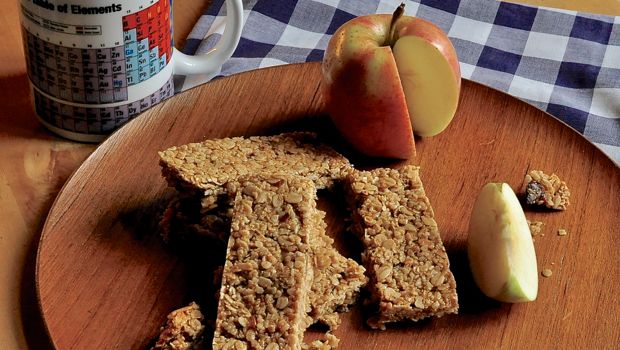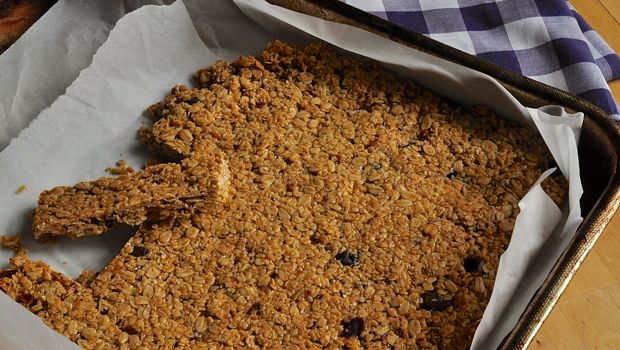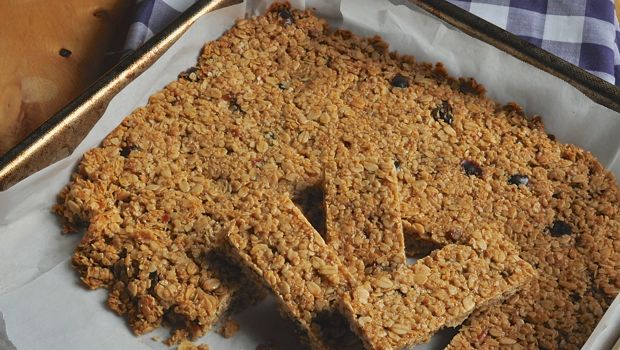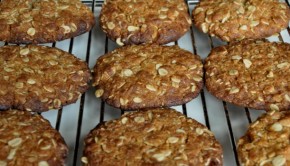Flapjacks- uncool but tasty
This week, hankering for a taste of the homeland, I decided to make a batch of flapjacks. Now if you’re not a fellow Brit you’re probably mouthing the same as my work mates did when I presented my baking spoils; “what’s a flapjack?”
Basically it’s a muesli bar (or granola bar to the Yanks). An unhealthy blend of sugar, butter, and oats baked in a tray. The British name for this delicious slice is admittedly unusual. I was curious as to the origins of the name flapjack; largely because I find linguistics in particular lexicology (study of words) fascinating, especially when it comes to my mother tongue English – the original mongrel language.
Cue nerd moment: did you know that the word hubbub comes from pre-Roman Celtic widely spoken throughout modern day England and Wales? The words three, mist and blue come from a Frisian (Netherlands) dialect that gave birth to English. And words such as anger, sky, leg and law are Norse (Viking). English also has influences from the Empire’s days in India with words like bungalow, pajamas and pukka being added to our 1500 year old language.
Anyway back to the origins of the word flapjack, the oldest reference I found was from Will Shakespeare in his play Pericles, Prince of Tyre. But it seems he was referring to desserts in general. It wasn’t until the early 1900’s that the term flapjack is used in association with this oaty slice.
Amusingly the term flapjack is also a professional wrestling move where two big, heavy, long haired blokes in bright lycra undies toss their opponent in the air so he lands flat on his face from a height = squashed nuts and nose, ouch! It’s also a type of hydraulic machine (something to do with lifting cars) plus our American cousins use flapjack in reference to a pancake that contains baking powder. What do they know anyway 😉
Fortunately the flapjacks I made were far more satisfying than my quest for the origin of the word. The traditional recipe calls for lots of butter and golden syrup, not wanting to make world a heavier place or put extra stress on airline seats I’ve tried to make it a bit healthier (but no less delicious).
This is a great little recipe to play around with, change the ingredients and the ratio of big oats to little. If you want a crunchy slice bake for longer, chewy bake it less. Crumble the slices into smaller bits and they make a fantastic topping for ice cream, yoghurt or porridge.
Preparation: 10 minutes
Cooking: 35-30 minutes
Ingredients
- 3 tbsp. desiccated coconut
- 10 dried dates – finely chopped
- 300g large rolled oats
- 150g quick cooking oats
- 150g salt free butter
- 75g soft brown sugar
- 2 tbsp. runny honey
- 4 tbsp. corn syrup
Method
- Preheat the oven to 190 degreesC
- Heat the butter, sugar, syrup, dates and honey in a pan over a moderate heat.
- When the sugar has dissolved and the butter melted, add the oats and coconut.
- Fold the butter into the oats until evenly mixed.
- Spoon the mix onto a baking tray lined with baking paper. Press the mix down – it should be about 2-3 inches thick.
- Bake for about 25 minutes or 30-35 for a crunchy biscuit
And if you’re vaguely interested in learning more about the evolution of the English language, I recommending watching The Adventure of English by Melvyn Bragg.






